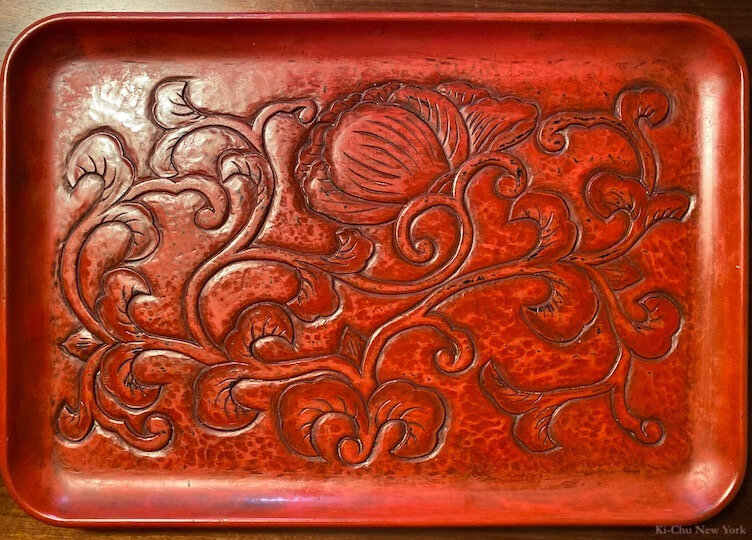Dear friends,
A couple of weeks ago we visited a vineyard, which is only about a 30-minute drive from home. We enjoyed the autumn leaves especially around the vineyard and the lake. The colors were so impressive and beautiful.
Grapes are one of the oldest cultivated plants and have been a symbol in many religions since ancient times. In Greece and Egypt grapes symbolized fertility and abundance and were considered a holy fruit. Grapes were introduced from Greece and Egypt to ancient Persia and then to India, where grape patterns were used in the Gandhara Buddhist sculptures. Through India, it was introduced to China.
Eventually, they were brought from China to Japan during the Nara period in the 8th Century. Grape patterns brought in from the West were highly regarded as foreign patterns and became one of the auspicious patterns that represent the abundance of Japanese Buddhist art. Grapes have a familiar existence and have a long history and culture in various places and religions.
Just two years ago I attended a tea ceremony that was held at Tokei-Ji Temple, one of the most famous Zen temples in Kamakura, Japan. A tea caddy patterned with grapes was used for the ceremony.
Actually, the tea caddy was a replica of the holy PYX Communion wafer box in the Catholic Church. The original one was made in the 16th century and stored as an important cultural property in Tokeiji Temple.
Around that time Japanese lacquerware was highly prized and very popular in Europe and much lacquerware was exported from Japan to Europe. The lacquerware at that time is called “ Nanban shikki”. The "IHS" logo represents the Society of Jesus and must have been specially made for them because they must have appreciated the high-quality work of Japanese craft.
No one knows why the holy communion wafer box was found in Tokei-Ji Temple. I imagine it traveled beyond time to places and religious churches and temples and returned to Japan, and this fills my heart with love.
Thanksgiving, is just around the corner, so regardless of religion it is a holiday that everyone in the United States celebrates, and they celebrate with wine, so my thoughts and wishes are to wish you all a Happy Thanksgiving!
All the best,
Kumiko





























